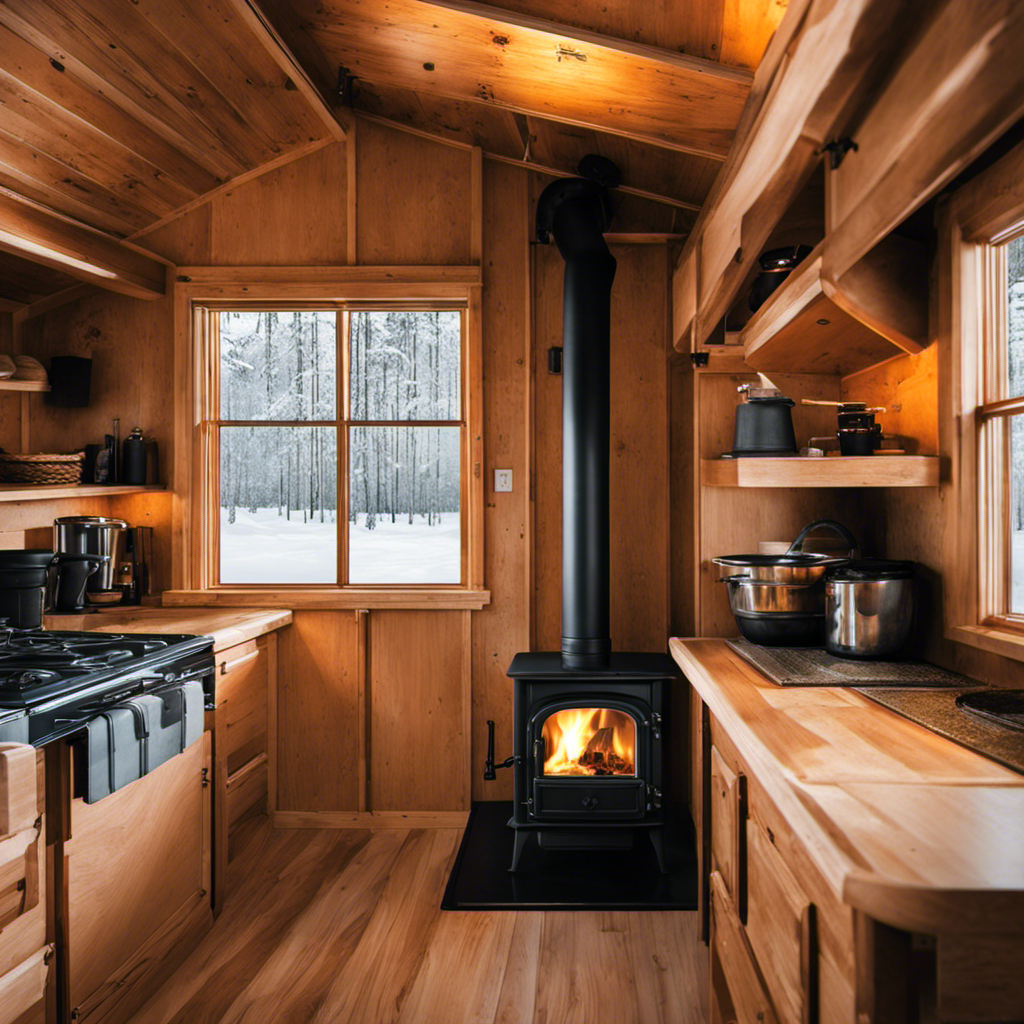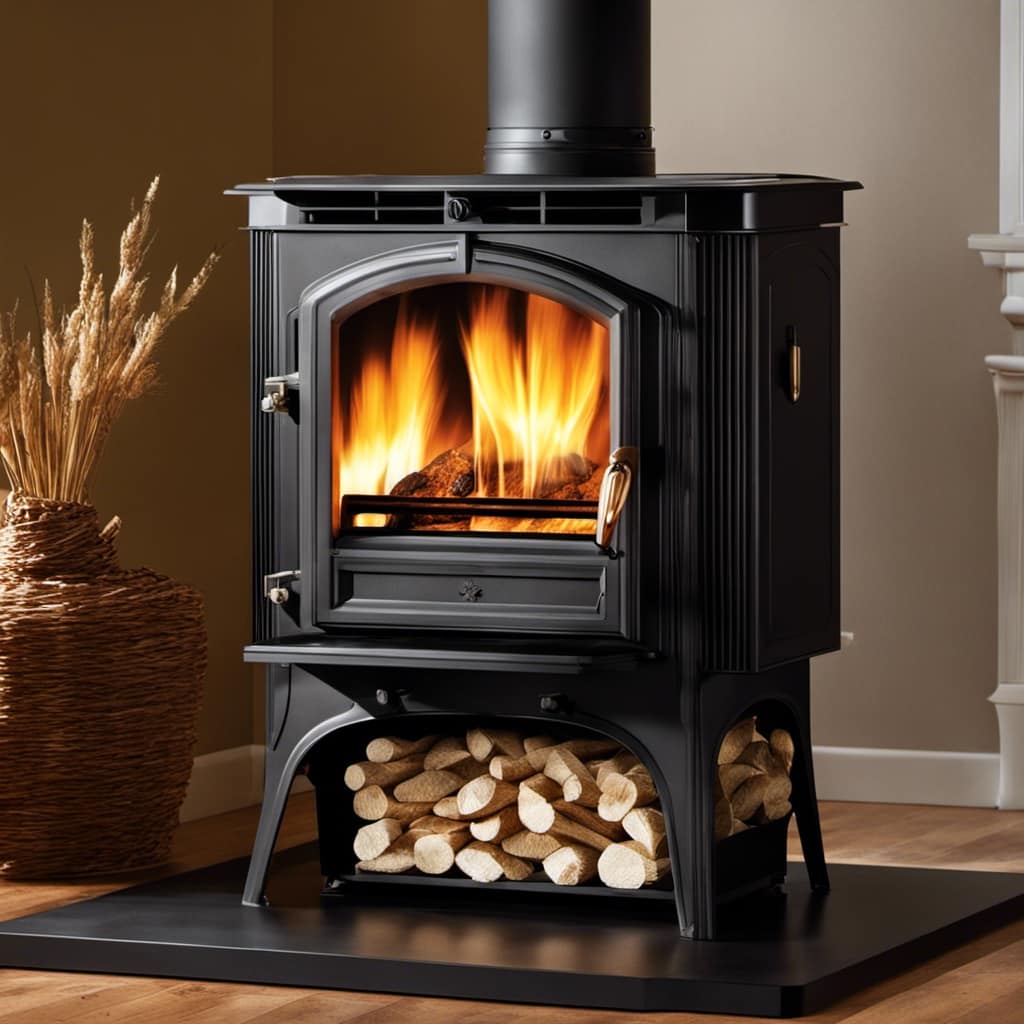
As someone who loves wood stoves, I’ve discovered the importance of mastering the **damper** and draft controls to ensure efficient and enjoyable fires. Get ready for a fun journey as I share valuable tips on airflow optimization and how to steer clear of common blunders. If you want to enhance your wood stove experience, keep reading to uncover the secrets of successful wood stove operation.
By understanding the importance of proper damper and draft adjustment, you’ll be able to create the perfect fire and enjoy the comforting warmth of your wood stove to the fullest.
Key Takeaways
- The damper regulates the amount of air entering the stove and adjusting it controls the intensity of the fire and heat produced.
- Opening the damper allows more air in, increasing the heat output, while closing it reduces airflow and decreases the heat.
- The draft controls manage the rate at which the fuel burns and adjusting them affects the efficiency and heat output of the stove.
- Proper adjustment of the damper and draft ensures optimal heat, prevents smoke from entering the room, and helps regulate the stove’s temperature.
Understanding the Damper and Draft Controls
I find it important to understand how the damper and draft controls work on my wood stove. By mastering these controls, I can effectively control the heat output and manage fuel efficiency.
The damper is a mechanism that regulates the amount of air entering the stove. By adjusting the damper, I can control the intensity of the fire and the heat produced. Opening the damper allows more air in, increasing the heat output, while closing it reduces the airflow and decreases the heat.

Additionally, the draft controls play a crucial role in managing fuel efficiency. By adjusting the draft controls, I can control the rate at which the fuel burns, ensuring a steady and efficient combustion process.
Understanding and utilizing these controls properly allows me to optimize the performance of my wood stove while keeping my home warm and cozy.
Importance of Proper Damper and Draft Adjustment
Properly adjusting the damper and draft on my wood stove is crucial for maintaining optimal heat and preventing smoke from entering the room. As someone who appreciates the benefits of using a wood stove, I understand the importance of troubleshooting common damper and draft issues.
Here are three key points to consider:
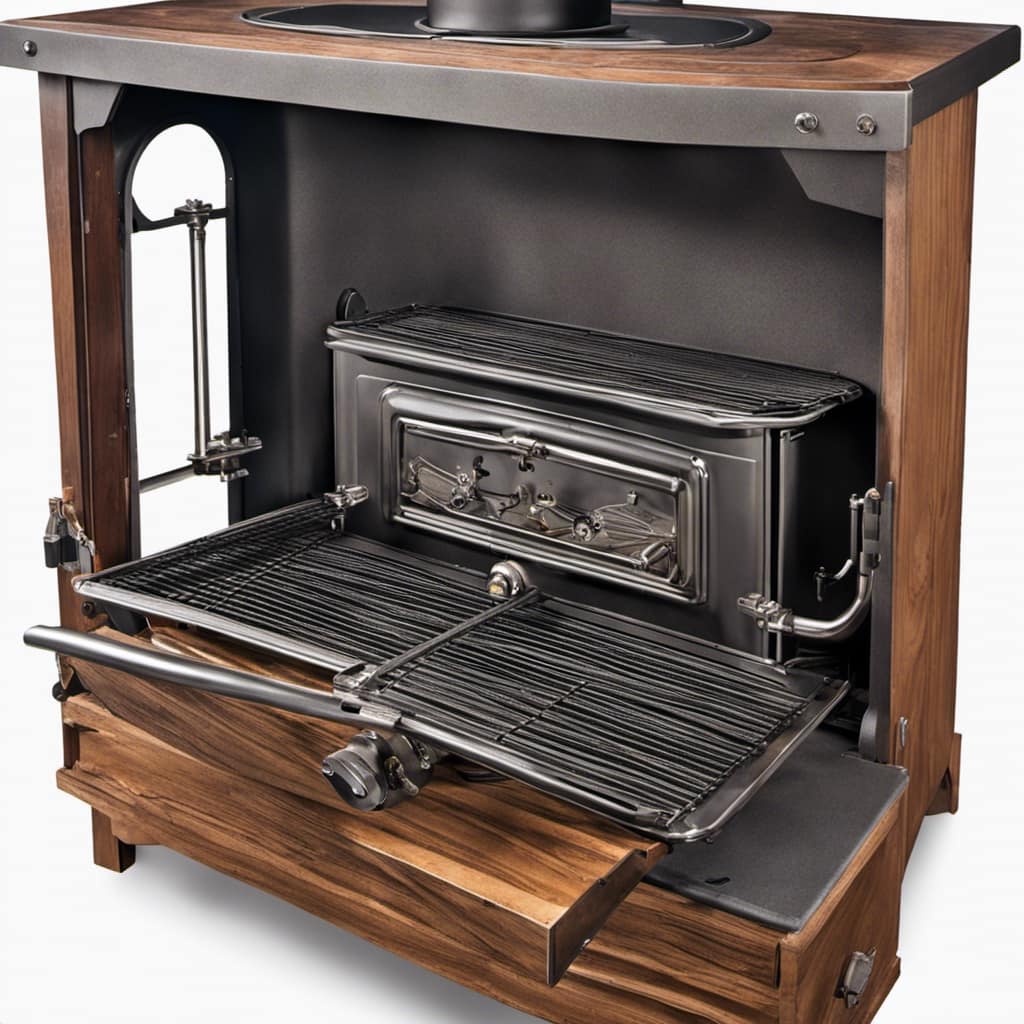
-
Draft control: Adjusting the draft controls allows for proper airflow, which affects the efficiency and heat output of the stove. A closed damper restricts airflow, while an open damper increases it.
-
Smoke control: A well-adjusted damper prevents smoke from escaping into the room. If smoke is present, it may be due to a closed damper or a blocked chimney. Check for any obstructions and ensure the damper is fully open.
-
Heat regulation: The damper and draft controls help regulate the stove’s temperature. Adjusting them allows for precise control over the heat output. If the stove is too hot, open the damper slightly; if it’s not hot enough, close it a bit.
Step-by-Step Guide to Using the Damper and Draft
Adjusting the damper and draft properly ensures efficient heat distribution and prevents smoke from entering the room. To troubleshoot damper and draft issues, it’s important to understand how to clean and maintain these components. Here are the steps to using the damper and draft effectively:

- Check for any obstructions in the chimney or vent pipe.
- Open the damper fully to allow for maximum airflow.
- Adjust the draft control lever to control the amount of air entering the stove.
- Monitor the smoke coming from the chimney. If it’s thick and black, increase the draft. If it’s light and wispy, decrease the draft.
By following these steps, you can troubleshoot damper and draft issues and ensure optimal airflow.
In the next section, we’ll discuss some tips for achieving optimal airflow with the damper and draft.
Tips for Achieving Optimal Airflow With the Damper and Draft
To achieve optimal airflow with the damper and draft, I find that opening the windows slightly helps to create a better circulation of air in the room.
In addition to this, there are a few other tips and tricks that can help maximize heating efficiency and troubleshoot common issues with damper and draft controls:
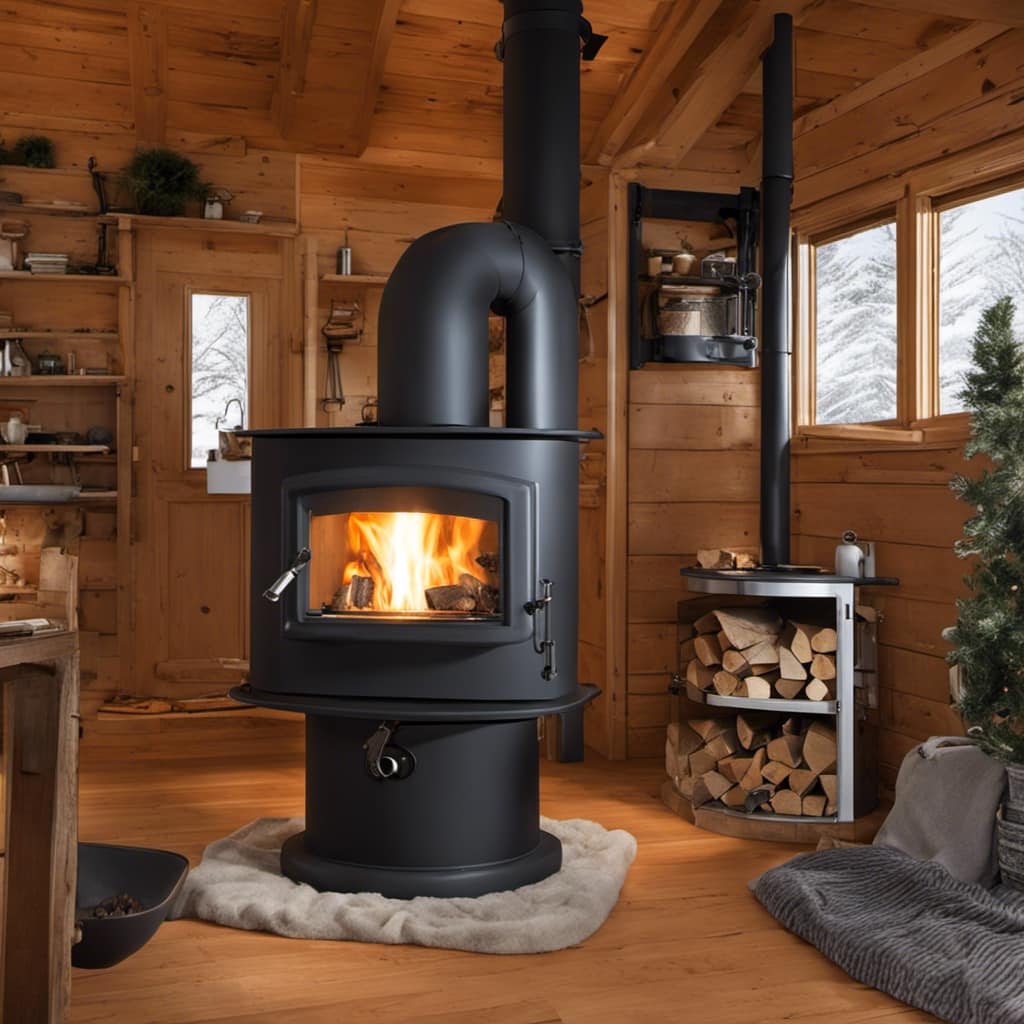
- Ensure the damper is fully open before starting a fire to allow for proper air intake.
- Adjust the draft control to maintain a steady and controlled burn rate.
- Clean the damper regularly to prevent any blockages or buildup that could hinder airflow.
By following these guidelines, you can ensure that your wood stove operates at its best, providing efficient heating and a comfortable environment.
Common Mistakes to Avoid When Using the Damper and Draft
One common mistake I often make when using the damper and draft controls is forgetting to clean them regularly, which can lead to blockages and hinder airflow. It’s crucial to clean the damper and draft controls regularly to ensure optimal performance and prevent any issues.
Another mistake to avoid is closing the damper completely, as this can restrict airflow and cause the fire to smolder. It’s important to find the right balance between open and closed positions to maintain a steady and efficient burn.
Additionally, failing to adjust the damper and draft controls according to the type of wood being burned can result in poor combustion and excessive smoke. Always refer to the manufacturer’s guidelines for recommended settings based on the wood you’re using.
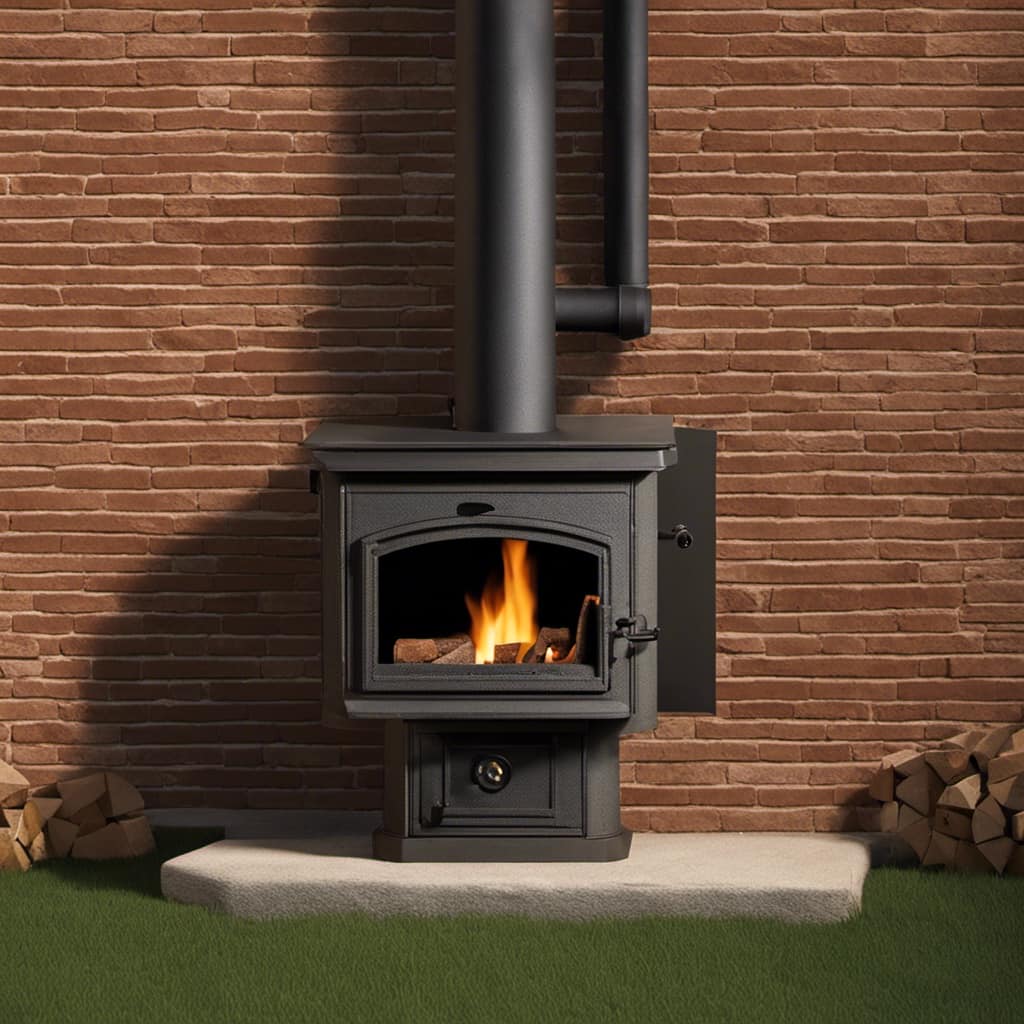
Frequently Asked Questions
Can I Use the Damper and Draft Controls on a Gas Stove?
No, you cannot use the damper control or adjust the draft on a gas stove. These features are specific to wood stoves, as they regulate the airflow necessary for combustion.
What Are the Benefits of Using the Damper and Draft Controls on a Wood Stove?
The benefits of using damper and draft controls on a wood stove include better control of airflow and heat output. To properly adjust these controls, consult the stove’s manual and make small adjustments while monitoring the stove’s performance.
How Often Should I Adjust the Damper and Draft Controls on My Wood Stove?
How often should I adjust the damper and draft controls on my wood stove? Proper usage of the damper and draft controls requires adjusting them frequently to maintain optimal airflow and efficient combustion.
Can I Use the Damper and Draft Controls to Control the Heat Output of My Wood Stove?
Yes, the damper and draft controls can be used to control the heat output of a wood stove. Proper usage of these controls allows for adjusting the flow of air and regulating the intensity of the fire.
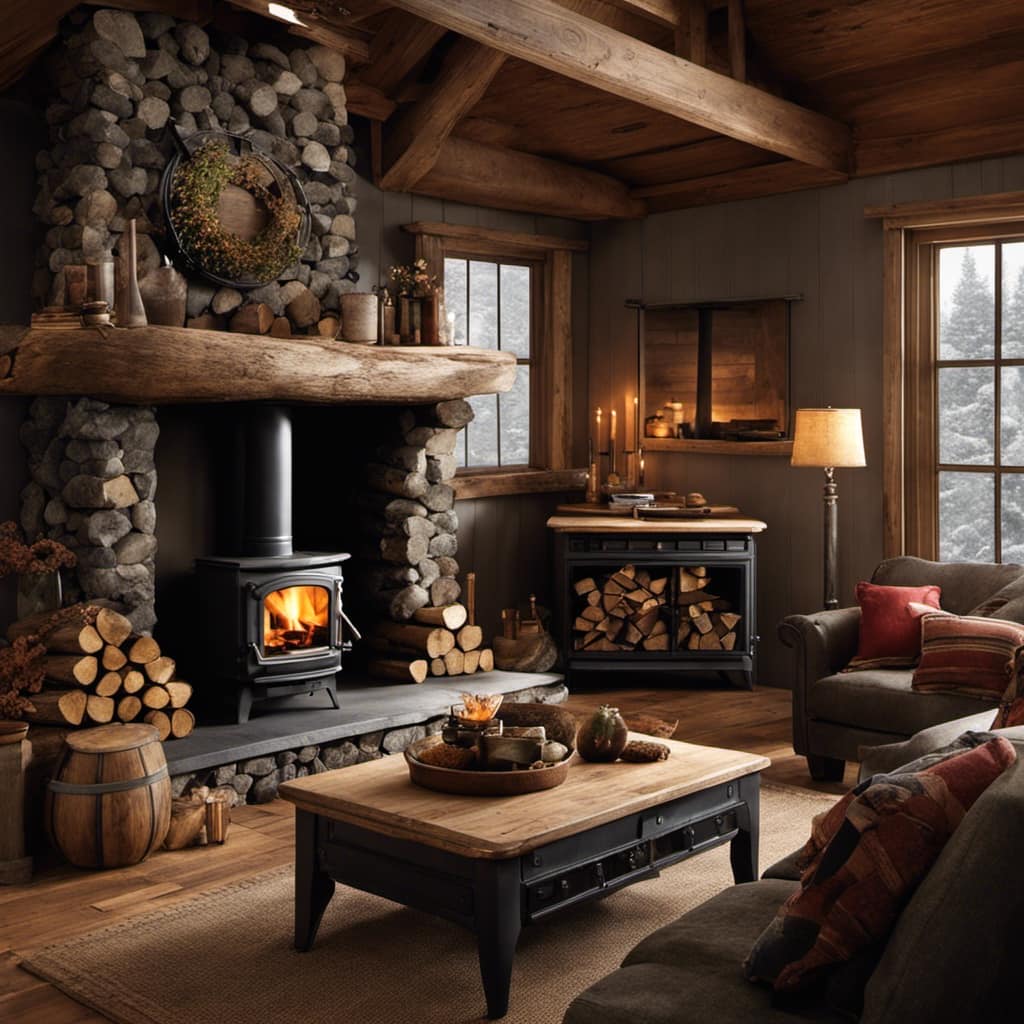
Are There Any Safety Precautions I Should Take When Using the Damper and Draft Controls on My Wood Stove?
When using the damper and draft controls on a wood stove, it is important to take safety precautions and ensure proper usage. This includes being aware of the heat output, maintaining proper ventilation, and regularly inspecting and cleaning the stove.
Conclusion
In conclusion, mastering the art of using the damper and draft controls on a wood stove is crucial for optimal performance and efficiency.
By understanding their functions and making proper adjustments, you can ensure a steady airflow and a well-regulated fire.
Remember, practice makes perfect, so don’t be discouraged if it takes some trial and error to find the right settings.
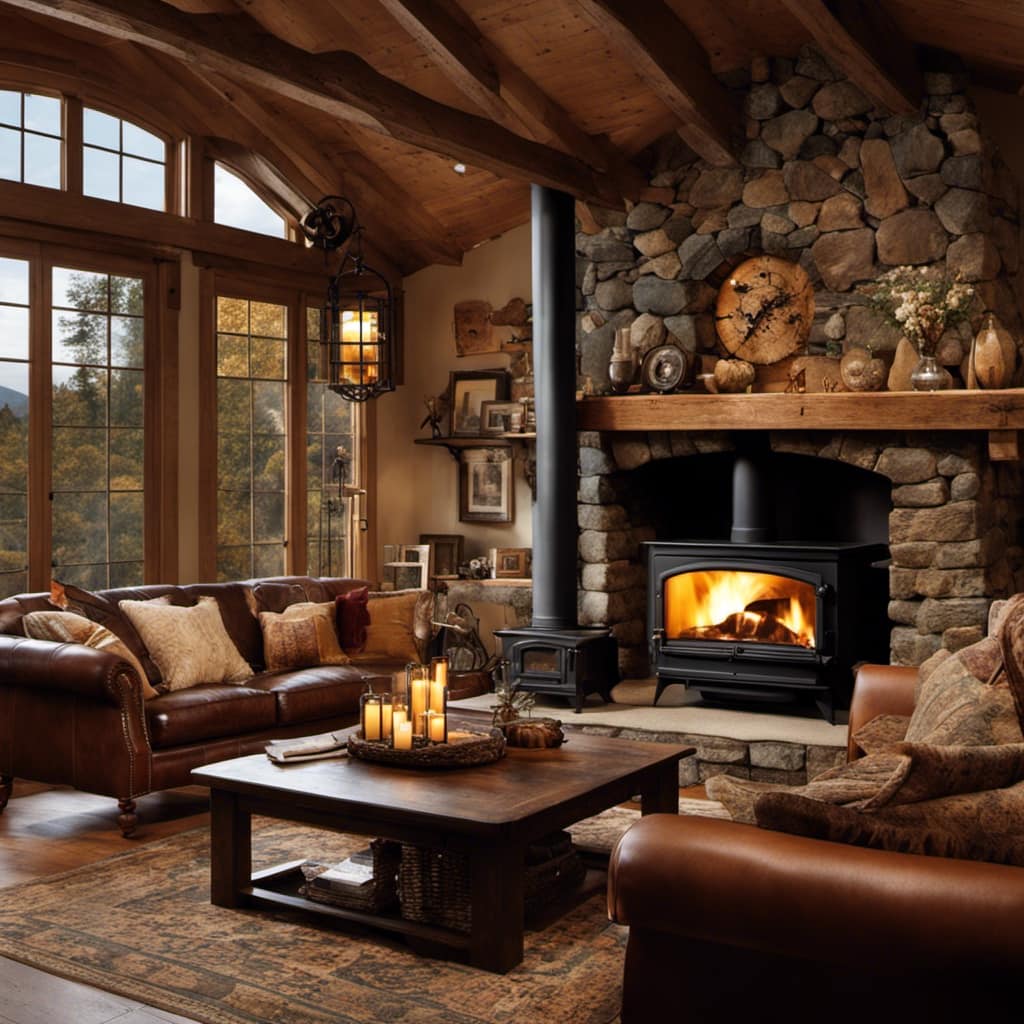
Just like the saying goes, ‘A stitch in time saves nine,’ taking the time to learn and perfect the use of these controls will save you from future frustrations and potential damage to your wood stove.
Growing up surrounded by the vast beauty of nature, Sierra was always drawn to the call of the wild. While others sought the comfort of the familiar, she ventured out, embracing the unpredictable and finding stories in the heartbeat of nature.
At the epicenter of every remarkable venture lies a dynamic team—a fusion of diverse talents, visions, and passions. The essence of Best Small Wood Stoves is crafted and refined by such a trio: Sierra, Logan, and Terra. Their collective expertise has transformed the platform into a leading authority on small wood stoves, radiating warmth and knowledge in equal measure.




